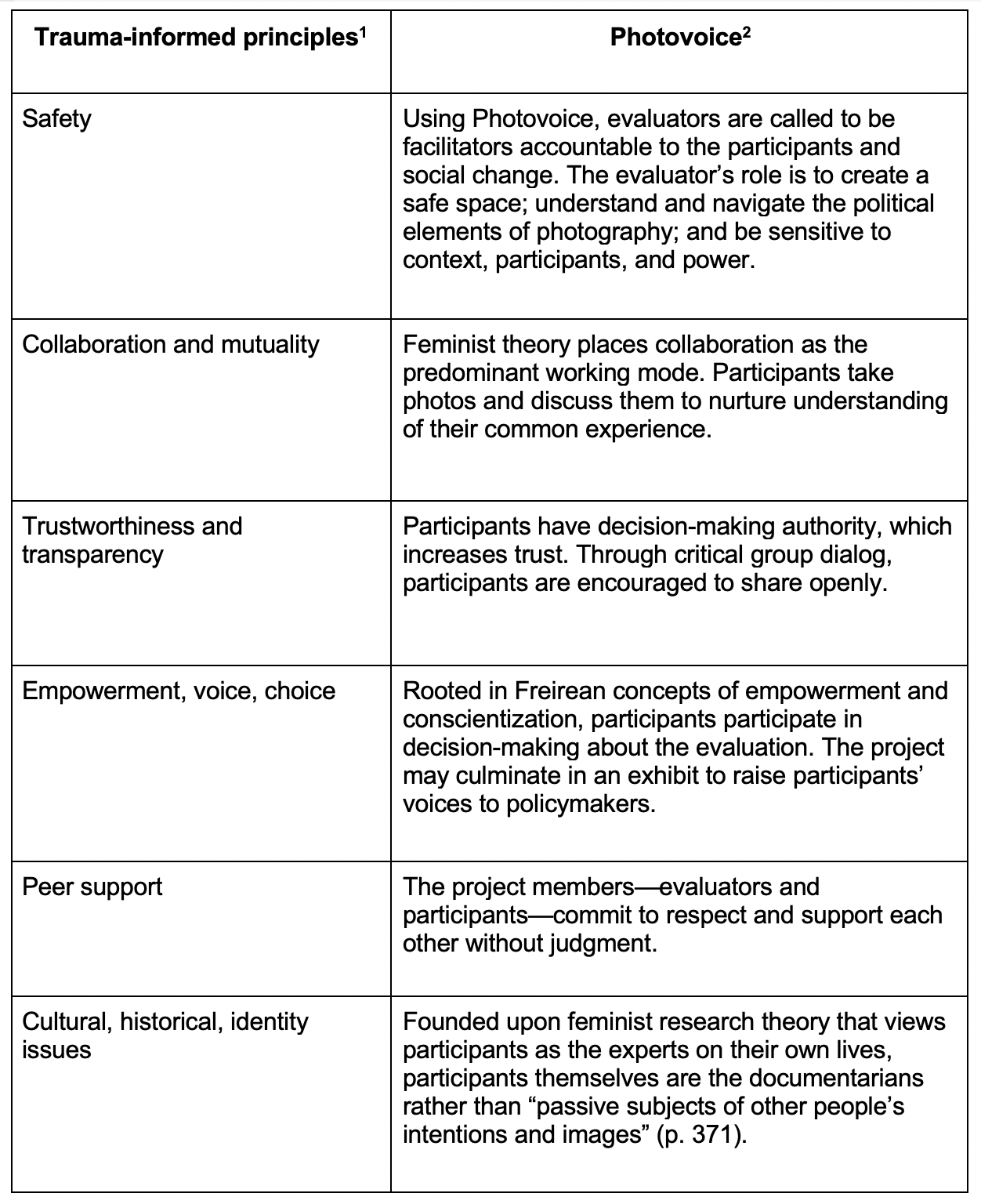
Hi, I’m Debbie Gowensmith, vice-president of Groundswell Services and PhD candidate specializing in evaluation at the University of Denver. With my colleague and partner, Dr. Neil Gowensmith, I have been using Photovoice with evaluations of programs for returning citizens, or people being released from prison.
People in prisons are more likely than the general public to have experienced trauma in their lives, and they may experience additional trauma while incarcerated. When evaluating programs that serve returning citizens or other populations who have histories involving trauma, evaluators run the risk of triggering individuals who are vulnerable.
Photovoice is a participatory, empowering approach that is grounded in Freirean and feminist principles. Participants themselves take photographs to tell the stories of their experiences. Though not explicitly designed to do so, Photovoice embeds trauma-informed principles that can create a more positive evaluation experience for participants who have experienced trauma.
The table below illustrates the congruence between trauma-informed principles and Photovoice. For example, we met with participants where they already were meeting as a peer support group, so it was a safe space for them. We kept them in those groups for the Photovoice project, so their peer support continued throughout the evaluation. Photovoice considers participants to be co-researchers with decision-making authority. In one case, a participant shared a story of childhood abuse but later decided she did not want her story to be used. We deleted her data from the evaluation and destroyed the files.

1Based on SAMHSA’s Concept of Trauma and Guidance for a Trauma-informed Approach
2 Based on the original Photovoice article by Wang & Burris, “Photovoice: Concept, Methodology, and Use for Participatory Needs Assessment”
Rad Resources:
- SAMHSA’s Concept of Trauma and Guidance for a Trauma-informed Approach is a helpful guidebook for groups interested in incorporating trauma-informed principles into evaluation and, more broadly, organizational culture.
- The University of Kansas’ Community Tool Box includes a straightforward summary of Photovoice with links to tools, resources, and references.
This week, AEA365 is hosting Trauma-informed Eval Week during which blog authors share lessons from and principles of trauma-informed evaluation. Do you have questions, concerns, kudos, or content to extend this aea365 contribution? Please add them in the comments section for this post on the aea365 webpage so that we may enrich our community of practice. Would you like to submit an aea365 Tip? Please send a note of interest to aea365@eval.org. aea365 is sponsored by the American Evaluation Association and provides a Tip-a-Day by and for evaluators.

This has been a great week of posts and I’d planned to say so at the culmination rather than commenting on each individually only to avoid annoyance.
But I did want to make a special point of thanking you for sharing the depth and transgressive/ subversive origins and potential of Photovoice. It is too often perceived as just a nifty little technique and its Asian American feminist originator has all but been erased. Thank you for citing her and doing her work justice!
Thank you for sharing this, Vidhya! You have provided a great reminder of how we can be intentional about our values of equity and justice through our citations.